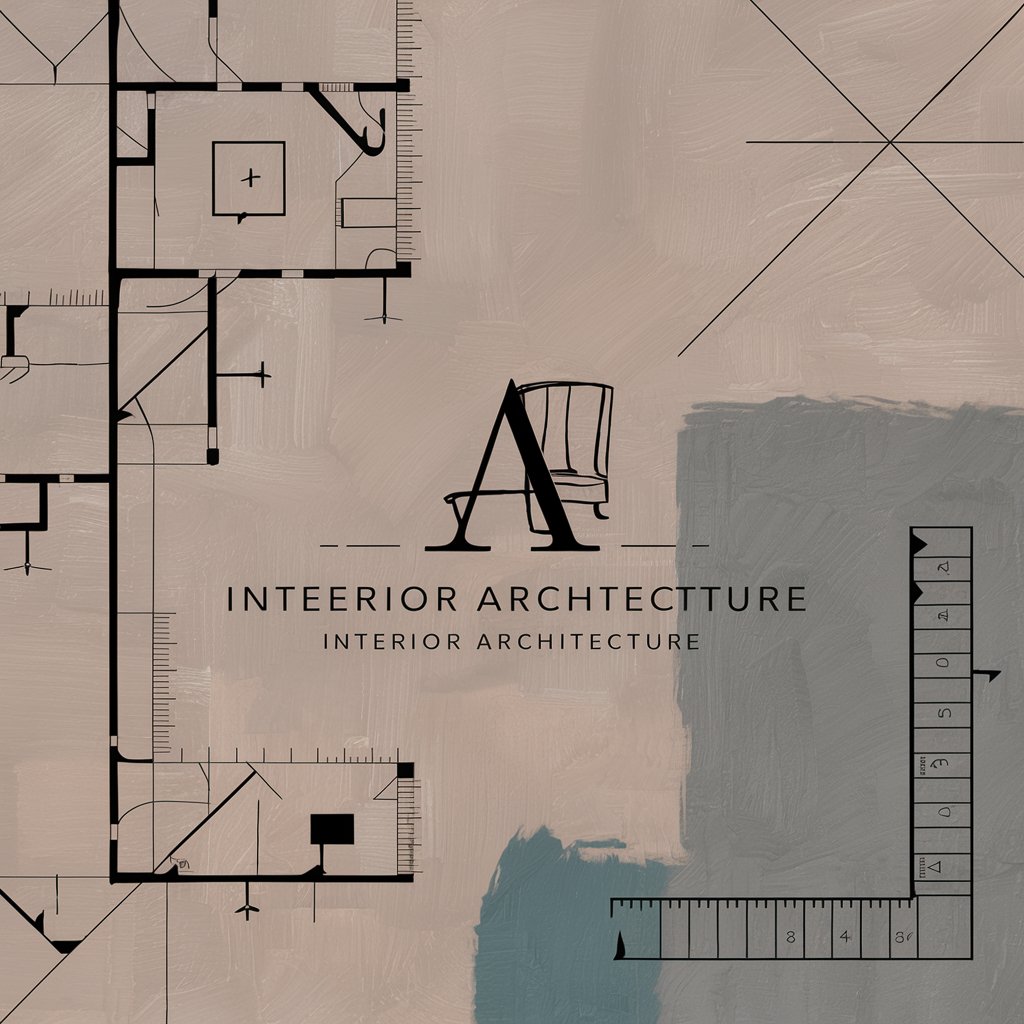Interior Architecture - Interior Architecture Guidance

Welcome! Let's design your perfect interior space.
Design smarter spaces with AI
How can I maximize natural light in a small apartment?
What are the best color schemes for a modern home office?
Can you suggest space-saving furniture for a studio apartment?
What are some stylish yet functional storage solutions for a family home?
Get Embed Code
Introduction to Interior Architecture
Interior Architecture focuses on the design and arrangement of interior spaces, emphasizing the intersection between architecture and interior design. It involves modifying the interior structure of buildings to better serve their purpose and enhance aesthetic appeal, functionality, and safety. This field goes beyond decorative aspects to include the spatial configuration and integration of interior systems (like lighting, ventilation, and acoustics), ensuring spaces are both beautiful and livable. For example, transforming a historic building into modern office spaces while preserving its architectural integrity showcases interior architecture by adapting the space to meet contemporary needs without compromising its historical essence. Powered by ChatGPT-4o。

Main Functions of Interior Architecture
Space Planning and Utilization
Example
Redesigning a cramped apartment into a spacious, open-plan living area.
Scenario
In urban areas, where space is at a premium, interior architects reconfigure layouts to maximize functionality and flow, often incorporating multi-functional furniture and smart storage solutions.
Enhancing Functionality and Aesthetics
Example
Integrating natural light and green spaces into office environments.
Scenario
To improve wellbeing and productivity, interior architects design workplaces that blend natural elements with ergonomic design, focusing on windows placement, indoor plants, and comfortable seating areas.
Adapting Buildings for New Uses
Example
Converting industrial warehouses into loft apartments or creative workspaces.
Scenario
This involves retaining the building's original character while ensuring it meets modern standards of comfort and safety, often requiring innovative solutions to incorporate residential or commercial amenities.
Improving Accessibility and Safety
Example
Upgrading public buildings to be more accessible to individuals with disabilities.
Scenario
Interior architects ensure spaces comply with legal standards for accessibility, incorporating features like ramps, tactile surfaces, and visually clear paths, enhancing usability for everyone.
Ideal Users of Interior Architecture Services
Business Owners and Corporations
They benefit from tailored workspaces that reflect their brand, improve employee satisfaction, and enhance customer experience. Interior architecture helps in creating functional, yet innovative office designs that foster collaboration and productivity.
Homeowners
Individuals looking to customize or optimize their living spaces for better functionality, aesthetic appeal, or to increase property value are ideal users. Services can range from full renovations to specific room redesigns, accommodating various lifestyles and needs.
Developers and Investors
Those involved in property development and investment benefit from interior architecture to maximize the appeal and functionality of their projects, whether residential, commercial, or mixed-use, ensuring they meet market demands and stand out in competitive landscapes.
Public Institutions
Schools, hospitals, and government buildings require spaces that are not only functional and safe but also conducive to their specific operational needs. Interior architecture can significantly improve the efficiency and quality of the services provided in these environments.

How to Utilize Interior Architecture
Start Your Journey
Begin by accessing a platform that offers a free trial without requiring a login or ChatGPT Plus subscription, such as visiting a specific website for initial exploration.
Define Your Objectives
Identify and articulate your design goals, whether for residential, commercial, or institutional spaces, to ensure the guidance you seek aligns with your project's requirements.
Explore Design Principles
Learn about key interior architecture principles such as spatial planning, material selection, and lighting design to understand how they can be applied to your space.
Apply Practical Solutions
Use the tool to find practical solutions and design ideas that address your specific needs, incorporating functionality, aesthetics, and sustainability into your space.
Seek Expert Advice
Leverage the platform to connect with design professionals for personalized advice or feedback on your interior architecture projects, enhancing the outcome of your design efforts.
Try other advanced and practical GPTs
Safety Moment Creator
Automate Safety Insights with AI

Urban Planner Pro
AI-powered Urban Planning Simplified

EnginCon Elite
Empowering projects with AI-driven insights

Anime Scout
Discover anime with a playful twist

2D Monster Crafter
Craft Your Monsters, Unleash Creativity

Darwin's Insight
Unlocking Nature's Secrets with AI

Creative architect
Empowering your brand's Instagram narrative.

Radar Architect/雷达建筑师
AI-Powered Radar Design and Analysis

Structure
Empowering design through AI-powered architectural insights

Wall Art Generator
Turn inspiration into AI-powered art.

Vucrein Art Generator
Crafting Vintage Fantasy Worlds with AI

Art Creator
Empowering creativity with AI

Frequently Asked Questions about Interior Architecture
What is the difference between interior design and interior architecture?
Interior architecture focuses on the structural aspects of the interior environment, integrating architectural design principles with the functionality of spaces, while interior design primarily concentrates on the aesthetics and furnishings within a space.
How can interior architecture improve a commercial space?
Interior architecture can enhance a commercial space by optimizing the layout for flow and efficiency, selecting durable materials suitable for high traffic, and creating an aesthetic that aligns with the brand, thus improving customer experience and employee productivity.
What sustainable practices are incorporated in interior architecture?
Sustainable interior architecture practices include using eco-friendly materials, maximizing natural light, improving energy efficiency through smart design, and incorporating green spaces or elements that promote environmental health.
Can interior architecture contribute to wellness in living spaces?
Yes, by designing spaces that support physical and mental health through considerations like air quality, natural lighting, sound insulation, and ergonomics, interior architecture can significantly contribute to wellness in living environments.
How does technology influence interior architecture?
Technology influences interior architecture through advancements in design software, innovative materials, and smart home systems, enabling more precise planning, sustainable solutions, and interactive environments that respond to the occupants' needs.
